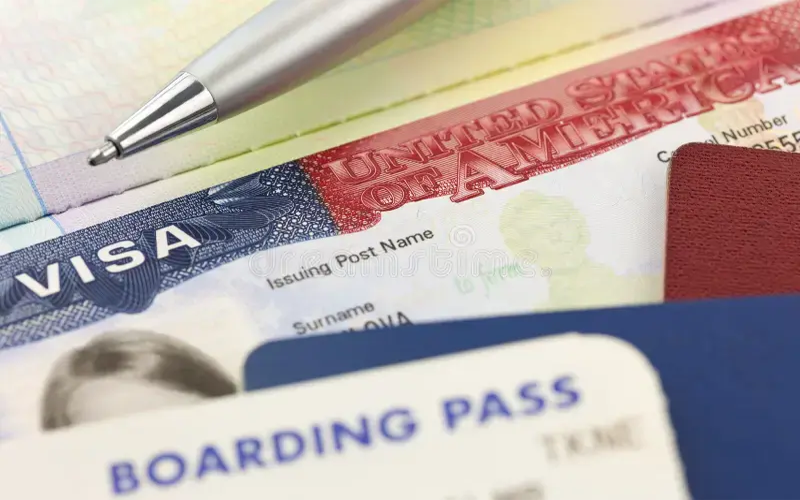Applying for a U.S. work visa, such as the H-1B, L-1, or O-1, involves several steps and specific criteria depending on the type of visa you’re applying for. Here’s an overview of the process for each of these popular work visas:
1. H-1B Visa (Specialty Occupations)
The H-1B visa is for professionals in specialized fields (e.g., technology, engineering, medicine) who have at least a bachelor’s degree or equivalent in the specific field.
Steps:
- Find a Sponsor (Employer): You must have a U.S. employer willing to sponsor you for the visa. This employer files the petition on your behalf.
- Labor Condition Application (LCA): Your employer needs to file an LCA with the U.S. Department of Labor to ensure that the wages offered meet the prevailing wage for the role.
- File Form I-129: Once the LCA is approved, your employer will file Form I-129, Petition for a Nonimmigrant Worker, with U.S. Citizenship and Immigration Services (USCIS).
- Wait for Lottery (if applicable): The H-1B visa is subject to an annual cap, so USCIS may conduct a lottery if there are more applications than available visas. If your petition is selected, it will move forward.
- Visa Approval: If the petition is approved, you will receive an approval notice (Form I-797). Then, you can apply for the visa at a U.S. embassy or consulate if you’re outside the U.S.
- Visa Interview: Attend the visa interview at the U.S. embassy or consulate, where you will provide required documents (passport, approval notice, LCA, etc.).
- Receive Your Visa: Once approved, you’ll receive your H-1B visa and can enter the U.S. to begin working.
2. L-1 Visa (Intra-Company Transfer)
The L-1 visa is for employees of international companies who are being transferred to a U.S. branch, subsidiary, or affiliate. There are two types: L-1A (for executives and managers) and L-1B (for employees with specialized knowledge).
Steps:
- Employer Petition: The employer must file a petition (Form I-129) with USCIS to transfer the employee to the U.S.
- Eligibility: You must have worked for the employer outside the U.S. for at least one year in the past three years and hold a managerial, executive, or specialized knowledge position.
- Visa Interview: Once the petition is approved, you will schedule a visa interview at a U.S. consulate or embassy.
- Documentation: Provide documents like proof of employment, company structure, and job role.
- Approval and Entry: If the visa is approved, you can enter the U.S. to work for the company.
3. O-1 Visa (Individuals with Extraordinary Ability)
The O-1 visa is for individuals with extraordinary ability in fields like science, arts, education, business, or athletics. It requires strong evidence of achievements and recognition.
Steps:
- Evidence of Extraordinary Ability: You need to provide substantial documentation of your achievements (awards, media recognition, high salary, etc.).
- Employer Sponsorship: Unlike the H-1B, you don’t need to have a degree, but you must have an employer or agent in the U.S. to sponsor your visa application.
- File Form I-129: The U.S. employer or agent must file Form I-129 with USCIS. This petition will demonstrate your extraordinary ability in your field.
- Consultation: A letter from a relevant peer group or professional association must be included to confirm your extraordinary abilities.
- Visa Interview: Once approved by USCIS, schedule a visa interview at a U.S. embassy or consulate.
- Visa Issuance: If approved, you can receive the O-1 visa and begin working in the U.S.
General Documents You’ll Need for Most Work Visa Applications:
- Passport: Valid for at least six months beyond your planned stay.
- Form DS-160: A completed application for a nonimmigrant visa.
- Visa Appointment Confirmation: After scheduling the visa interview.
- Form I-797 (for H-1B or O-1 applicants): Notice of approval for your work visa petition.
- Labor Condition Application (LCA) for H-1B or Evidence of Employment for L-1/O-1 applicants.
- Employer Letter: Detailing your role and the terms of your employment.
Key Considerations:
- Timing: Processing times can vary, especially for H-1B petitions due to the cap and lottery system. It’s essential to plan ahead.
- Cap and Lottery (H-1B only): The H-1B visa has a limited number of visas available each fiscal year (usually 85,000 total). The lottery process means not all applicants will be selected.
- Extensions and Changes of Employer: Some work visas, like H-1B, can be extended or transferred to a new employer under specific circumstances.
Each visa type has its own nuances and requirements, so you should consult with an immigration attorney or a legal expert to ensure your application is handled correctly.
Let me know if you need more detailed information about any specific visa or step in the process!






